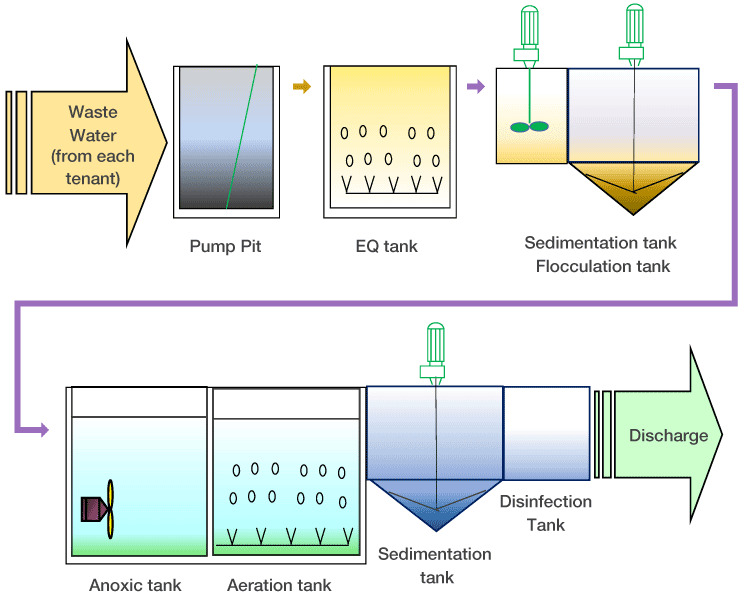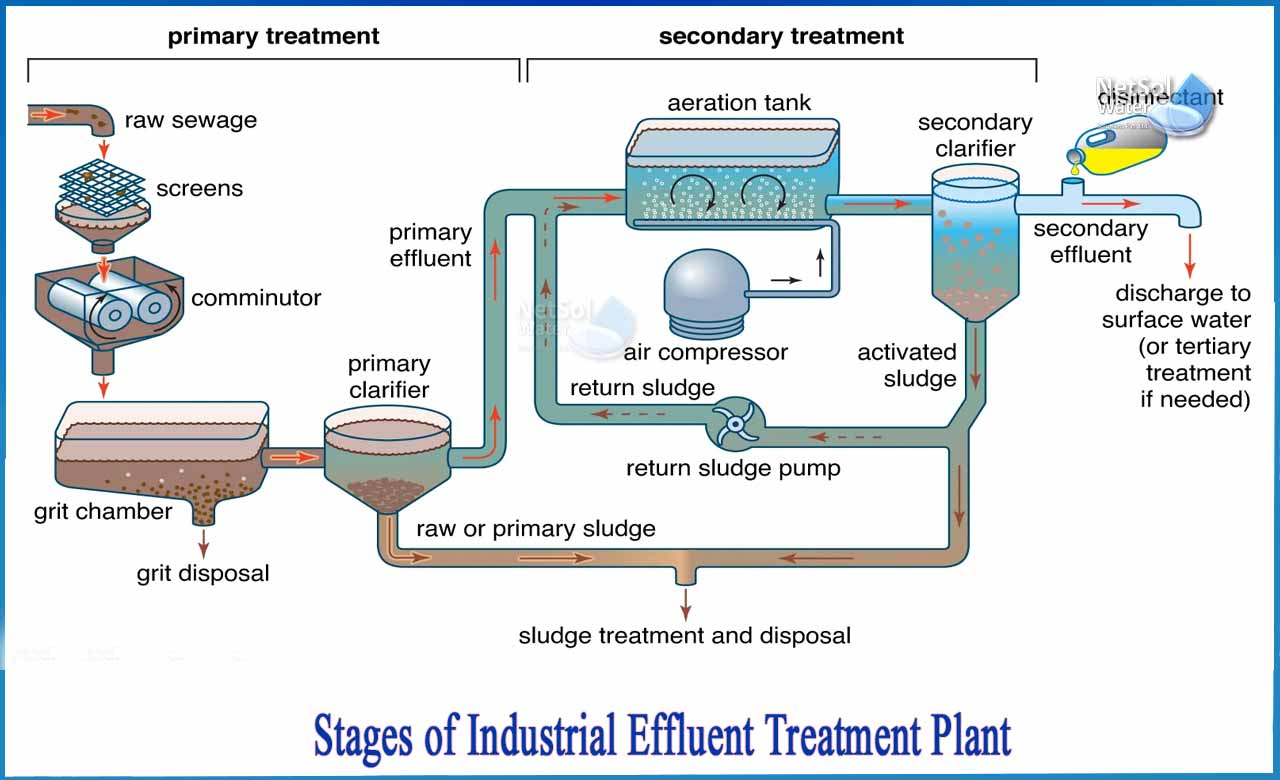Industrial Waste Water Treatment-- Eco-Friendly Solutions for Water Recycling
Obstacles and Solutions in Industrial Waste Water Therapy
The therapy of industrial wastewater presents a multifaceted array of obstacles, varying from rigorous regulative compliance to the complexities of cost monitoring and technological constraints. The irregularity in waste structure even more complicates the performance of standard treatment techniques, commonly resulting in intensified operational expenses.
Regulatory Compliance Obstacles
Just how can industrial centers navigate the complicated landscape of regulatory compliance in wastewater therapy? The governing framework regulating wastewater management is diverse, often varying by territory and kind of sector.
To effectively handle these conformity challenges, centers need to execute durable surveillance and reporting systems that guarantee real-time information collection and evaluation. Normal audits and danger analyses can identify possible conformity gaps, enabling for proactive adjustments in therapy procedures. Staff member training programs concentrating on regulatory knowledge and ideal practices are necessary to cultivate a culture of compliance within the organization.
Furthermore, involving with regulative companies can give beneficial insights and make clear unclear guidelines. Facilities may additionally profit from seeking advice from ecological specialists who concentrate on wastewater treatment conformity, making certain that they remain informed of evolving laws. By embracing these approaches, commercial centers can not only fulfill compliance demands but also boost their operational efficiency and ecological stewardship.
Expense and Economic Barriers
Browsing regulatory compliance in wastewater therapy commonly provides significant monetary obstacles for industrial centers. The expenses connected with carrying out necessary therapy innovations, keeping compliance with rigid guidelines, and managing functional costs can be discouraging. Many companies face high initial resources expenses for the building or updating of wastewater therapy plants, which may strain budget plans, specifically for medium-sized and tiny enterprises.
Additionally, continuous operational expenses, consisting of maintenance, chemical, and labor inputs, add to the economic problem. The unpredictability of rising and fall energy prices and the possible need for added financial investments to satisfy advancing laws aggravate these economic stress. In most cases, the absence of economic rewards or support from federal government bodies makes it also more tough for companies to warrant investments in advanced therapy systems.
Furthermore, the financial feasibility of wastewater treatment options is typically questioned, particularly for sectors with limited earnings margins. Therefore, it is critical for commercial centers to check out economical methods, such as adopting innovative financing choices, participating in collaborations, and leveraging emerging innovations that can help minimize these financial barriers while ensuring conformity with environmental criteria.

Technical Limitations
Countless technological limitations hinder the effectiveness of commercial wastewater therapy procedures. One considerable challenge is the inadequacy of existing therapy technologies to address intricate contaminants. Several standard techniques, such as turned on sludge and chemical precipitation, battle with the removal of emerging toxins, including microplastics and pharmaceuticals. This restriction often results in the discharge of improperly dealt with water, which can have harmful environmental effects.
Furthermore, the scalability of therapy innovations postures an obstacle. While some innovative methods, like membrane filtering or advanced oxidation, show promise in regulated atmospheres, their implementation on a bigger range can be excessively pricey and practically tough. Upkeep and operational intricacies additionally complicate the adoption of these systems, specifically for smaller sectors with minimal technical competence.
The combination of real-time surveillance modern technologies likewise continues to be insufficient in numerous treatment facilities. Without reliable surveillance systems, operators can not sufficiently evaluate treatment efficiency or spot prospective failures, causing irregular effluent quality. Resolving these technical constraints via study and advancement, along with investment in ingenious options, is vital for boosting the official site effectiveness of industrial wastewater treatment and ensuring regulatory conformity.
Irregularity in Waste Structure
In the realm of commercial wastewater therapy, the variability in waste structure offers an awesome difficulty. Industries generate wastewater with diverse features, affected by elements such as production processes, raw products, and functional practices. This diversification makes complex the treatment procedure, as traditional systems often battle to successfully deal with the wide variety of contaminants present.
For example, wastewater from food processing might consist of high levels of raw material, while effluents from chemical manufacturing could consist of heavy steels and hazardous materials. This variation requires adaptable therapy approaches to make sure compliance with ecological regulations and secure public wellness. Furthermore, fluctuations in waste make-up can take place in time, affected by modifications in production routines, maintenance tasks, or the intro of new items.

Cutting-edge Treatment Solutions
Ingenious therapy services are essential for attending to the intricacies of industrial wastewater management. Typical methods commonly fall short in properly removing a vast array of contaminants, especially in facilities with varied effluent streams. Current advancements concentrate on incorporating advanced modern technologies to improve treatment effectiveness and sustainability.
One encouraging approach is using sophisticated oxidation procedures (AOPs), which utilize powerful oxidants to weaken organic pollutants. AOPs, including photocatalysis and ozonation, can dramatically reduce harmful compounds and enhance effluent top quality. In addition, membrane layer bioreactor (MBR) innovation has gotten grip, incorporating organic therapy with membrane layer purification, causing high-quality effluent and decreased footprint.
One more ingenious option is the application of source healing systems. Methods like anaerobic food digestion not just deal with wastewater yet additionally produce biogas, which can be taken advantage of as a renewable resource resource. Moreover, the fostering of expert system and artificial intelligence versions can maximize therapy processes by anticipating variations in wastewater composition, therefore boosting functional effectiveness.
These innovative remedies not only address regulatory conformity however also advertise ecological sustainability, paving the means for a much more resilient and effective industrial ecosystem.
Verdict
In final thought, dealing with the obstacles of industrial wastewater therapy needs a diverse strategy that integrates governing compliance, price administration, and technical developments. Cutting-edge services, such as innovative oxidation processes and membrane layer bioreactor innovation, deal pathways to improve therapy efficiency. In addition, real-time monitoring systems and joint engagement with regulative agencies can promote lasting practices while reducing financial stress. A dedication to continual improvement in treatment methods will inevitably contribute to the efficient administration of commercial wastewater and environmental protection.
The therapy of commercial wastewater offers a complex array of challenges, ranging from rigid regulative conformity to the intricacies of price management and technical restrictions. Industrial Waste Water Treatment.Navigating regulative compliance in wastewater treatment frequently presents significant financial challenges for commercial centers. Attending to these technical restrictions with research and development, along with financial investment in ingenious services, is important for enhancing the efficacy of industrial wastewater treatment and ensuring governing conformity
Wastewater treatment facilities have to spend in robust surveillance systems and versatile treatment technologies qualified of fitting varying influent features.In final linked here thought, dealing with the obstacles of industrial wastewater treatment needs a multifaceted strategy that integrates regulatory conformity, cost monitoring, and technological innovations.